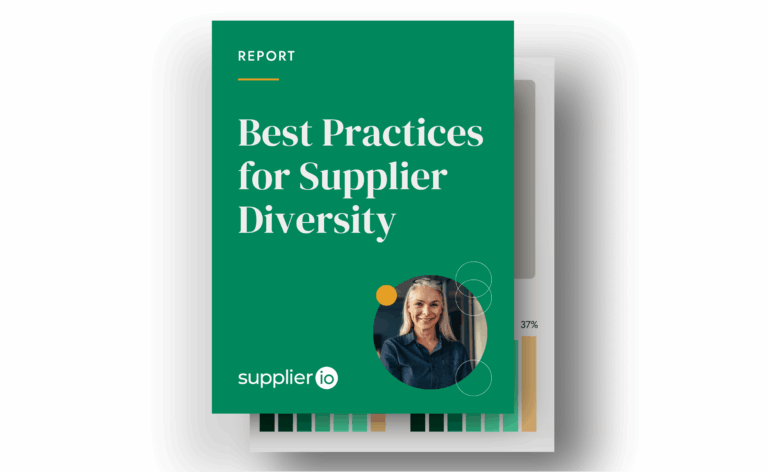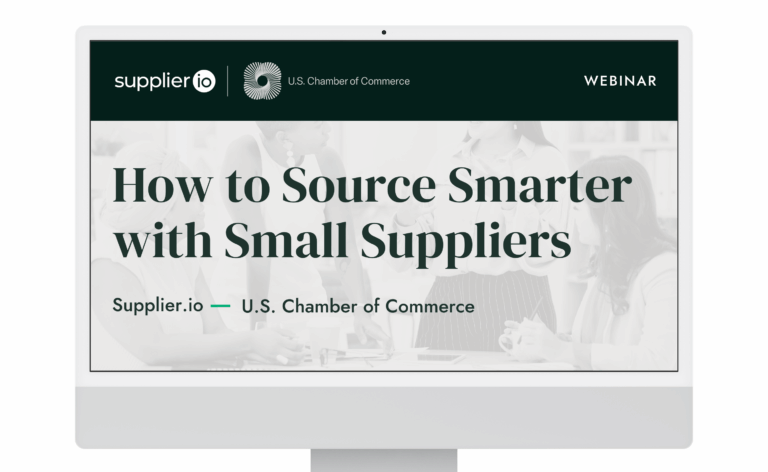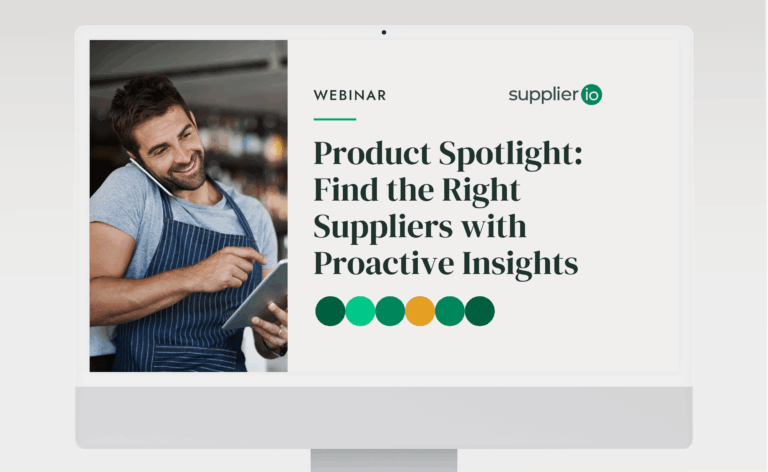Actionable Insights from The State of Supplier Diversity
Research shows leaders truly support the idea of supplier diversity. Review 3 ways you can turn that support into action.

Aylin Basom, Supplier.io CEO, and Lois Eichacker, Supplier.io VP of Customer Success, sat down with Kelly Barner and Scott Luton for a recent Dial P for Procurement livestream to discuss the 2022 State of Supplier Diversity Report.
This year’s report offered some intriguing insights into the primary drivers of supplier diversity and the ways in which leaders still struggle with scalable processes. Aylin and Lois offer their insights into how to leverage increased executive engagement to solve some of the biggest challenges still facing programs.
Closing the Knowledge Gap
While supplier diversity programs have existed for close to fifty years, they weren’t very widespread outside of the automotive industry and certain government contractors.
This changed in 2020, however, as the COVID pandemic severely disrupted supply lines and left many companies searching for innovative ways to keep their supply chain healthy, and protests surrounding racial injustice had organizations dedicating themselves to social equality.
While this new spotlight on supplier diversity is undoubtedly a net positive, programs that started or found increased executive engagement post-2020 can find themselves struggling to reach their desired goals without the tools or budgets needed to build a robust program.
Setting Attainable Goals
One of the first and best steps for any supplier diversity program is to set clear, reasonable, and attainable goals. As Aylin says, “What gets measured gets done.”
The key word being “attainable”. A CEO’s initial excitement for a supplier diversity program can quickly dampen if they believe your program’s ambitions are outside of the company’s scope, so it’s essential to make sure your goals not only align with the company and CEO’s overall plans, but also have a clear roadmap for success.
Lois says, “When you’re talking to the boots on the ground, which is where the work gets done, you’re not going to motivate them if you give them a goal that they don’t think is possible to achieve. They’ll just move on to the next thing.”
To know if your goals are attainable, it’s important to know what your baseline is. Data enrichment is a vital tool in determining what your baseline is and, from there, what your most appropriate goals are.
Automating the Process
While executive support for supplier diversity is at an all-time high, many programs are still struggling to implement scalable processes to help their programs grow.
One of the biggest reasons behind this is the fact that many supplier diversity programs are bogged down by manual processes; 26% of respondents still primarily track their data on an Excel spreadsheet.
Manually collecting data has many pitfalls; not only does it take more time from what could be a relatively small team (47% of respondents reported only having one dedicated supplier diversity team member), but the data itself can be completely outdated by the time it even gets on a spreadsheet.
Automating your supplier diversity processes can help your program keep up with the speed of the business, as well as give you and your executive team the assurance that the numbers you’re working with are the most up-to-date and accurate possible.
This speed and assurance make it much easier to build scalable processes that create buy-in across your organization. As Aylin says, “I refuse to think that supplier diversity is the supplier diversity manager’s job alone. We have to work as a whole organization to make these programs successful.”
Conclusion
2022 marked a drastic shift in the levels of executive engagement with supplier diversity programs, and the momentum from this shift will carry on into 2023. As you’re planning for your program for next year, we hope you keep these insights in mind, and find ways to turn your executive’s enthusiasm into measurable action.
These are just a few of the insights we gained from the Dial P for Procurement livestream. To hear more from Aylin and Lois, as well as Kelly and Scott’s thoughts.
Download the 2022 State of Supplier Diversity Report
Want to learn more about how to optimize your supplier diversity program? Book a consultation with one of our sales representatives and find out how Supplier.io can help.




